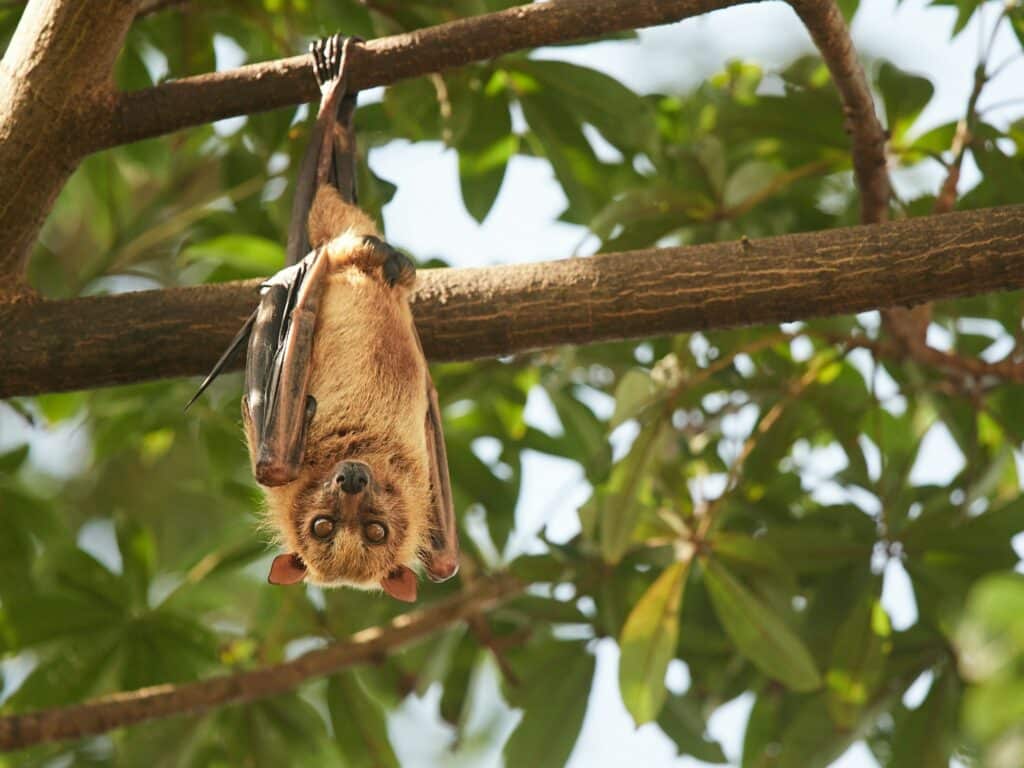Insights
Four tools for bat conservation research
Of the 1,400 bat species alive today, approximately 15 per cent are considered threatened by the IUCN. Alongside habitat destruction and hunting, the spread of wildlife diseases like white-nose syndrome (WNS) is a leading cause of bat population decline. WNS is particularly problematic in the United States and Canada where it has devastated native bat populations, including the northern long-eared bat, little brown bat, and tricolored bat.
With the IUCN classifying a further 242 bat species as ‘data deficient’, it’s clear that robust monitoring data is essential for developing a better understanding of the distribution and abundance of bats.
At Wildlife Drones we regularly work with clients across the United States and Australia to track a range of bat species, from federally endangered Indiana bats to myotis bats. Here are four key tools required for effective bat conservation research.
1. Bat detectors
Small, agile and capable of covering vast distances, bats are notoriously difficult to track. Not to mention challenging to find in the dark! That’s where bat detectors come in. They work by detecting and recording the unique high frequency calls bats make as part of their unique process of echolocation. There are two main types of bat detectors:
- Heterodyne, frequency division and time expansion detectors, which convert ultrasounds produced by bats into audible sounds in real time so that scientists can locate the bats in the field.
- Detectors, such as full-spectrum sampling detectors, that enable high quality recordings of high-frequency sounds for later analysis.
2. Traps for catching and tagging
Catching and tagging bats is a key part of the monitoring process, and one that is still performed with relatively simple tools. Specifically, bats are typically caught using:
- Mist nets — sheets of fine nylon or polyester mesh suspended between two poles that allow researchers to safely survey bats. Because the mesh is so fine, bats have trouble seeing the nets at night and fly into them, allowing researchers to gently capture bats for study.
- Harp traps — a frame with two rows of vertical threads and a collecting bag at the base. When the bat flies into the trap, the threads channel them down into the collecting bag where they can be easily retrieved by researchers, without damaging their wings. They’re particularly useful in areas where flying bats can be channelled through a natural corridor, such as above a water course of a cave entrance.
3. Radio-tracking with drones
With most bats being too small to be fitted with GPS tags, scientists have typically relied on traditional radio-tracking methods to build a picture of their movements. Until recently, the only way for researchers to monitor bats fitted with VHF tags was from the ground with handheld receivers or from fixed wing aircraft—two methods which are costly, time-consuming and inefficient.
Radio-tracking bats with drones is a relatively new method that enhances researchers’ ability to track bats while out foraging, and at roosting sites. Using Wildlife Drones’ world-leading radio-telemetry system to radio-track bats fitted with VHF tags dramatically improves detection rates and boosts data quality, while reducing the time and effort required to track bats. Already, Wildlife Drones has worked with:
- Ecological Australia to radio-track microbats across Australia. Wildlife Drones made it faster and easier for the team to survey known bat locations by expanding their signal detection range, reducing signal bounce and enabling the team to survey previously inaccessible locations including gorges and sea caves.
- Copperhead Environmental Consulting to track Indiana bats. By fitting the Wildlife Drones system to a fixed-wing aircraft, the Copperhead team was able to search for up to 40 bats at once, rather than one bat at a time, reducing total flight time and expenses.
- The Californian Dept. of Fish and Wildlife to track Myotis bats to locate the roosts they use over fall and winter. Wildlife Drones’ technology enabled the team to quickly survey vast areas that are otherwise hard to reach. As National Park Service Program Manager Alice Chung-MacCoubrey said, ‘having an antenna way up in the air massively increases our ability to detect anything.’
4. Thermal imaging cameras
Thermal imaging technology has been a game-changer when it comes to monitoring bats, as it allows researchers to more easily generate insights into how bats behave at night when they are most active. By detecting heat signatures from bats, scientists can study bat flight paths and identify difficult to spot tree roosts, without the need to disturb bats with external lighting.
Book a meeting with us today to learn more about how Wildlife Drones’ innovative radio-tracking technology can assist with your bat conservation project.


